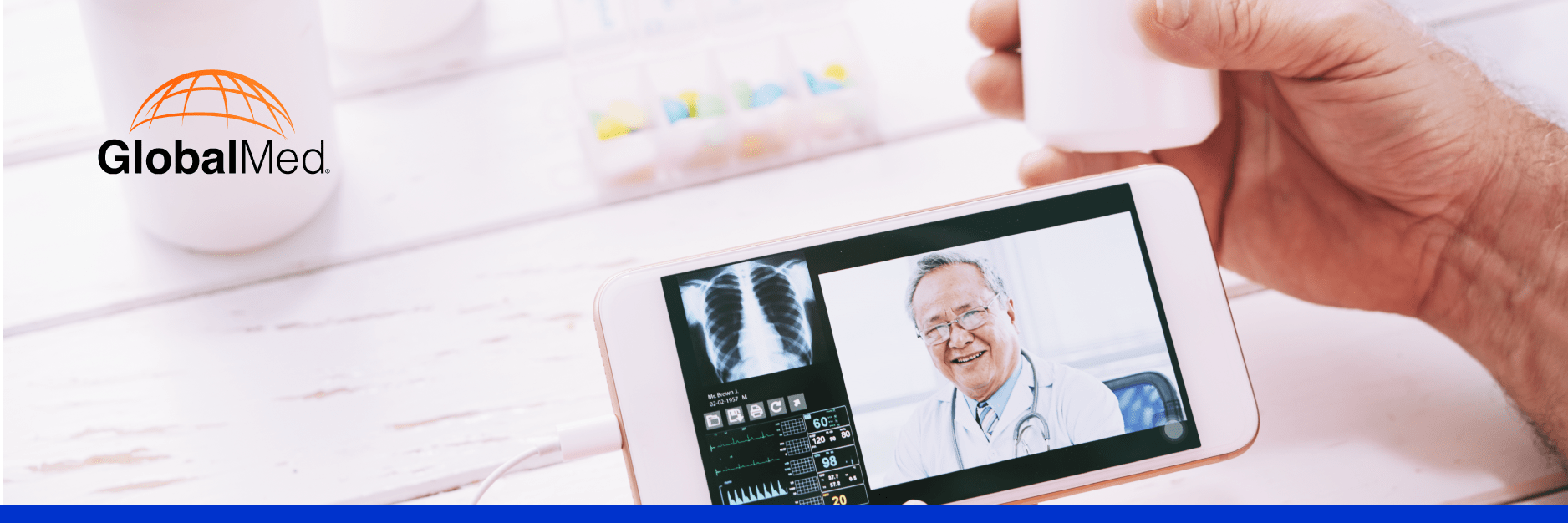 From time to time, we get asked what happens during a telemedicine visit? To start, let’s define telemedicine. Also called telehealth, virtual care, or virtual health, telemedicine is the use of digital information and communication technologies, such as computers and mobile devices, to gain access to health care services remotely.
From time to time, we get asked what happens during a telemedicine visit? To start, let’s define telemedicine. Also called telehealth, virtual care, or virtual health, telemedicine is the use of digital information and communication technologies, such as computers and mobile devices, to gain access to health care services remotely.
Telehealth visits have historically faced barriers beyond the technological challenges that come with real-time, synchronous audio and video communication. But some of those barriers are now coming down because of COVID-19 and more than ever before, clinicians are exploring how telehealth can help them expand care virtually.
We’ve been talking to a lot of providers and many of them have a vague idea of what telehealth involves, but they aren’t clear on its many uses, what happens during a telemedicine visit, and how to navigate the coding and billing requirements for virtual visits.
This article describes some helpful basics. We’ll cover the types of conditions telemedicine can treat and how it can be used for a wide range of patient care uses. We will also touch on what happens during a virtual visit and how you can get paid for virtual care delivery just like you would for a face-to-face medical visit.
What conditions can telemedicine treat?
Your typical telemedicine visit centers around gathering symptoms and other information that will lead to diagnosis and treatment. At the simplest level, telehealth can be used for minor health issues that don’t require lab tests or imaging to diagnose. Allergies, coughs, colds, flu, infections, insect bites, sprains, and gastrointestinal symptoms can all be evaluated through telemedicine platforms.
Additionally, a telehealth platform is useful for delivering counseling and behavioral health services. Clinicians can use it to encourage patients to adopt healthy lifestyle behaviors and keep tabs if they are complying with care directives. By observing patients in their own home, clinicians can obtain valuable information on the patient’s living conditions and other social determinants of health that can help with diagnosis.
Telemedicine can be also used for access to specialty care, especially in rural areas where there is a shortage of specialists and wait times for appointments are long. Assessing patients in a clinic using medical devices integrated with telehealth software, allows a provider to gather images or other artifacts to share and collaborate with specialists located at a more advanced care facility – often a long distance from the patient.
Telehealth can also be used for chronic disease management. Patients can receive follow-up care from the convenience of home for conditions such as heart problems or diabetes. Doctors can give test results during a telehealth visit and even prescribe medications.
Telehealth also helps care providers who visit patients in their homes or assisted care facilities connect with providers for more comprehensive care. It can even bring care to some of the most remote and underserved communities in the world.
How Telehealth Contributed to Care During COVID-19
Detection
Telehealth filled gaps in early detection for patients who self-isolated and avoided overcrowded and infected emergency rooms. Patients used telemedicine to triage their symptoms and guide them to further care. Virtual health is especially useful for high-risk patients – seniors, the chronically ill, and those living close to each other such as on military ships, in prisons, and working on oil rigs, to name a few.
Containment
Telehealth helped providers keep tabs on patients diagnosed and in quarantine. For those in mass quarantine, virtual care also helped manage the large numbers of people who had to be monitored and tracked. For seniors in a long-term care facility or others living in residential care, telehealth expanded staff capability to monitor symptoms and helped patients manage multiple chronic conditions.
Treatment
Once a patient tested positive for COVID-19, two things become critical: isolation and consistent, close monitoring of symptoms. Care provided via video conference paired with data-capturing medical devices integrated with telehealth software and delivery systems, allows providers to capture vitals, oxygen saturation, respiratory functions, and heart and lung sounds without having to transport the patient outside their home or care facility.
How the Telehealth Visit Works
A well-designed telemedicine platform ensures the virtual visit follows the same clinical guidelines as an in-person visit. It will include secure software to enable functionality such as patient intake, scheduling, managing the patient chart, creating superbills, e-prescribing, built-in CMS CPT and ICD-10 codes, and much more. You will also need reliable internet connectivity and some necessary hardware, including a computer device with a camera and microphone.
Once you have established the technology and connectivity, a telemedicine visit will typically begin similarly to a face-to-face visit with the provider asking questions about the patient’s medical history. Depending on the equipment available at the patient’s location, some vital signs can be gathered, such as weight, blood pressure, and temperature. In the case of COVID-19 symptoms, many patients will have a thermometer as they are readily available and affordable. Self-reporting of symptoms is becoming easier than ever before as the availability of healthcare apps, and smart devices increases.
For telehealth visits where a care provider joins the patient, cameras like these make physical exams easier to conduct via video. The cameras allow doctors to carefully inspect any areas of concern. Other integrated devices can also capture clinical data, allowing the provider to make an evidence-based diagnosis.
As the visit concludes, the patient can be given a diagnosis, guidance for ongoing evaluation, a referral, be provided a prescription, and arrangements can be made for follow-up care – just like an in-person visit.
Coding and Billing Requirements for Virtual Visits
Diagnosis codes are just as crucial for virtual visits as they are for routine office visits. Accurate diagnosis documentation establishes the medical necessity for services, and it ensures accuracy when capturing patient health data – crucial to understanding the financial and medical impact of medical conditions.
Recently, the World Health Organization (WHO) added a new ICD-10 emergency code, U07.1, for COVID-19, and the CDC recently announced an unprecedented, off-cycle update to the U.S. ICD-10 code set, adding U07.1 effective April 1, 2020.
The American Academy of Family Physicians published a helpful chart that outlines the service, summary, and HCPCS/CPT codes for various types of telehealth visits – an excellent resource to start with as you do your homework. They have also prepared guidance for diagnosis coding specific to COVID-19.
Adopting telemedicine for your practice
Incorporating telemedicine services into a healthcare practice may seem overwhelming, but it can be made easy with the guidance of an experienced telehealth vendor. You don’t have to be technology savvy or drastically change the way you deliver care. GlobalMed has been providing virtual care technology – software, delivery systems, and medical devices – for nearly 20 years. Our trained experts can answer your questions and guide you every step of the way.




Telemedicine is making a very positive contribution to healthcare during the pandemic, and is being used in a variety of ways. Thanks for sharing.
Telemedicine is making a very positive contribution to healthcare during the pandemic and is being used in a variety of ways. Visit our healthcare platform PATIENTMD.COM to consult with our Physician via Telemedicine. Thanks for sharing.
Thanks for giving us the advanced information.